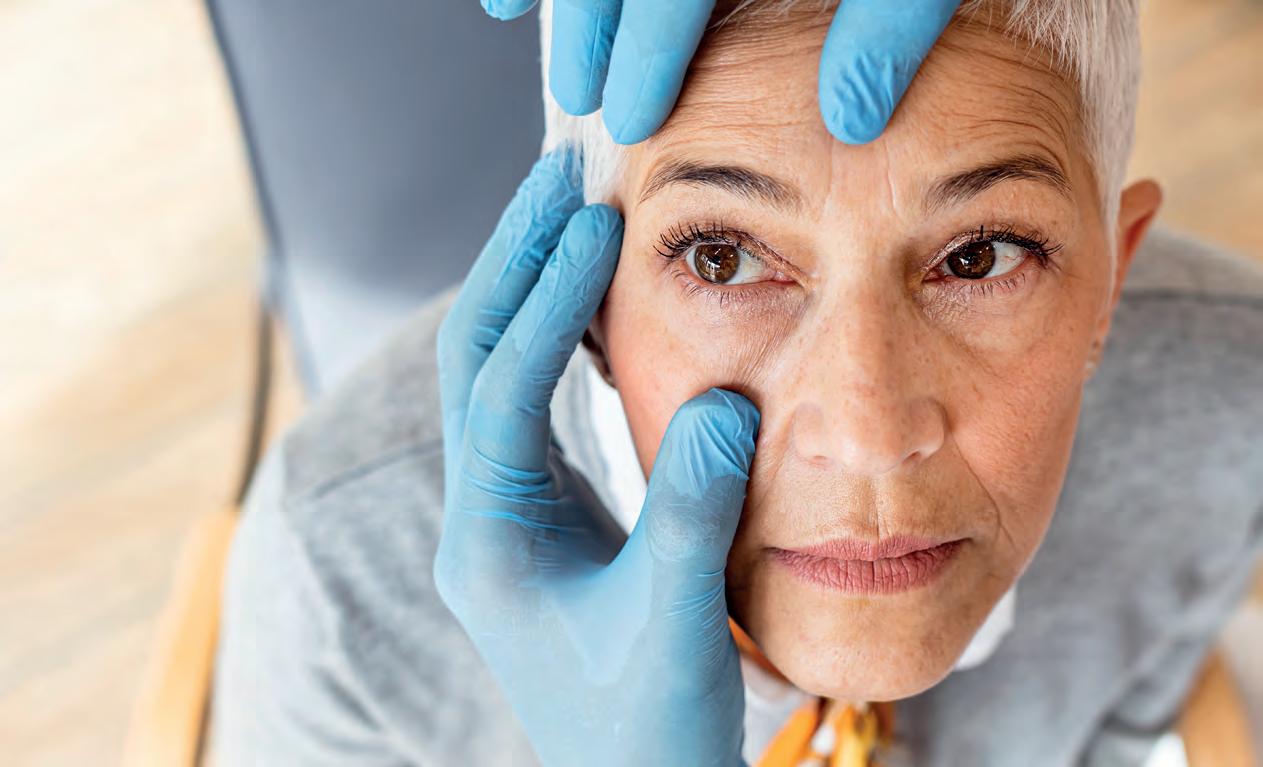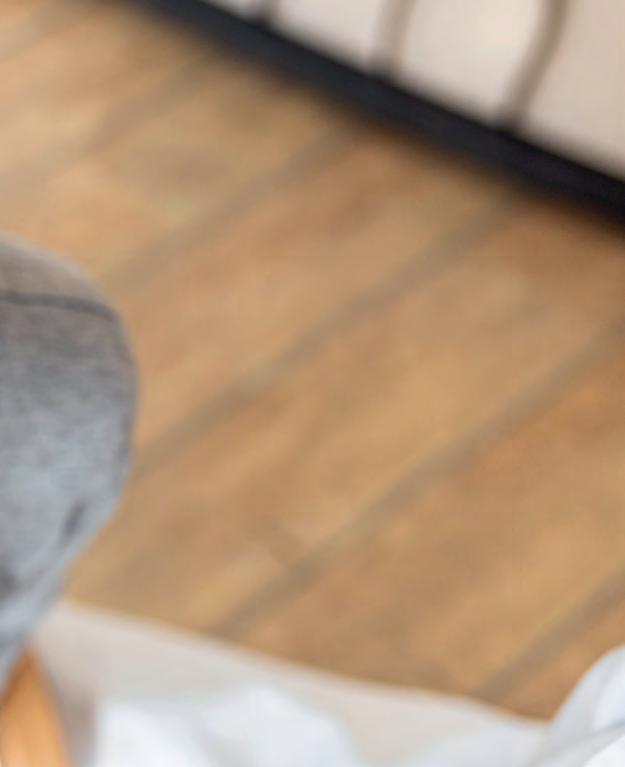
5 minute read
Communication when referring to independent providers
by TheAOP
In a roundtable discussion, in partnership with SpaMedica, OT asked: how can private providers support optometrists to enhance the patient experience?
Optometrists are increasingly finding that referring patients to private providers for treatment can relieve stress and allow them to be seen more quickly than they would be otherwise.
Advertisement

In hosting a roundtable discussion in partnership with SpaMedica, OT gathered a group of eye care practitioners to discuss this approach – from knowledge-sharing and upskilling through a two-way referral process, to ensuring patients are ready for surgery and the value of staying in communication patient afterwards.
A two-way referral process
Karen Hunter has been referring to independent NHS service providers since 2015. OT asked what benefits she has found in this approach.
“It opens another avenue for referral, when waiting lists are getting ever-longer, and provides more options for patients,” Hunter explained.
Hunter’s patients often hear on the grapevine about successful operations and ask whether they can be referred to the same provider, she said, emphasising that this route has allowed for greater patient choice.
“To give patients an option is brilliant,” she said. “To open up the referral process hopefully means waiting lists come down, more people can get their surgery, and we can see patients living happier lives – that’s why I started.”
In her time referring patients to NHS service providers, Sarah-Jane Smith has learnt how important it is to be able to pass a high level of information to the practitioner who is performing the pre-assessment. “I try to make sure it will run smoothly: if they have any access issues, if they’re in a wheelchair, if they’re going to be attending with someone, if they’re hard of hearing, and make sure there’s enough detail in the referral,” Smith said.
Making the provider aware of any underlying pathology and if the patient has certain expectations is also key, she said, because “it allows them to confirm and elaborate on what has already been discussed.”
The patient also has a head start to think about what they’re going to be asked. It is a few bullet points on the key takeaways – anything that might hinder the prognosis and whether I’ve discussed it, giving as much information as possible,” she added.
When considering feedback on referrals for surgery that has not gone ahead, Hunter emphasised that there is a duty of care to a patient who is insistent that they want to have their cataracts removed, even if the hospital decides the operation is not needed.

“It’s hard for the patient to get their head round,” she said. “To a certain extent, it’s a hard conversation to have, because they’re frustrated, and you can’t do a lot to help. But just try as best you can to explain the problems, and go through the risks of cataract surgery. A lot of patients will accept that there are risks involved, and if their vision is good and they can live with it, a lot will carry on.”
She added: “It’s having those conversations, so they understand and appreciate why we can’t do their surgery. There’s a vision limit and a cut-off for a reason.”
Receiving results post-treatment is important, Smith said: “It allows me to track the patient through the process. I go through what will happen with them, and tell them that I will get a letter and I’ll know when [the surgery] is going to go ahead.”
She added: “When we receive a letter to say that the patient has had the operation, we touch base for a welfare check, which allows us to get them booked in for their post-op check.”
This back-and-forth communication helps patients feel supported throughout the process, Smith said.
OT is interested in hearing how information is shared between professionals who are looking after the same patient – that is, between the hospital and the practice.
Hunter believes that “bridging that gap between the hospital, yourself and the patient is vital.”
If hospitals have not kept the referring optometrist in the loop they can be left on the backfoot when patients ask questions, she said.
The two-way communication is something that all the practitioners find vital to the process.
In terms of SpaMedica’s communication process, Woodhouse emphasised that “for me, it couldn’t be better. We’ve got complete access, and nobody thinks we’re mad for following up and asking questions.”

Match-fit for surgery
Community optometrists who refer patients into secondary care play a key role in ensuring they have the best outcomes. So, how can optometrists ensure that the patient’s eyes are ready for treatment? And how do practitioners explain that the health of a patient’s eyes will play a role in their surgery outcomes?
Smith explains that outlining what the referral includes and breaking down the clinical reasons for certain things – for example, why a patient might need to use eye drops – is helpful in managing compliance.
“It’s about setting their expectations and telling them that, if they do what they’ve been told, it will make their clinical procedure much more successful,” she said.
She added: “If they can get used to handling and putting drops in before surgery, when they have the additional drugs afterwards that’s just something else to add into the routine they’ve already got going.”
Hunter emphasised that compliance involves trial and error, and that explaining this to the patient can be helpful, so they are not put off if things do not go right the first time.
“It’s stressing to the patient how important it is to get the drops in, so they don’t run into problems with inflammation or uveitis. It’s [about] trying to make sure they do it,” she added.
What processes do the practitioners have in place to ensure their patients receive the right communication at the right time, pre-surgery?
Smith emphasised that her practice is on hand to answer questions or communicate with the provider if needed ahead of or after the pre-op assessment.
“I try and guide them, but the bottom line is, if they have any questions, come to us,” she said. “We’ve got their history, they are our patient, and we’ve referred them for that care. We are there to bridge the gap if there are any questions or queries.”
She added: “Pre-surgery, I’ll try and deal with as much as I can.”
If there are any concerns, she will contact the provider’s local representative.
Hunter agrees: “Forging good relationships with the treatment centres is key, as is getting information back from them. It’s a two-way street.”
As their surgery date approaches, Woodhouse believes most of his patients would be comfortable contacting the surgery provider themselves – but he is also more than happy to pick up the conversation if needed.
“The bottom line is that we’re always happy to talk to our patients,” he said. “There is no limit for them getting in touch with us.”
Management in the community
Post-surgery, how do practitioners welcome patients back into practice – and has that journey been consciously developed?
“You want your patient to come back so you’ve got that onward care,” Hunter said.
She added: “You want to touch base as soon as possible after their surgery, to make sure everything is alright, and so if they have any problems, they come back to you.”
Hunter reaches out to the patient as soon as she receives notification that the surgery is complete. A post-op check is then booked in.
Smith emphasises to patients that what they are experiencing – gritty or itchy eyes, for example – is normal, and wait until problems are resolved before discussing whether they need new glasses or if they should be referred for cataract removal on the second eye.
“It’s about being clear, and repeating advice,” she said.
“I make a point of telling the patient that the results I get during the post-operative check are sent back to the surgeon. I make it clear that that communication is there, and that any concerns will be flagged.”
It is vital to be aware that surgery is often emotional for patients, even though optometrists see it every day, Smith added.
In referring patients back to secondary care after surgery, Hunter emphasises that positive relationships can be hugely helpful – as can clear communication over what the issue is.
She is also on hand to follow up if the patient doesn’t hear from the hospital directly, she explained.
Hunter said: “It’s important that we make that link. The better communication you have with the hospital, the better service you can provide your patients.”









